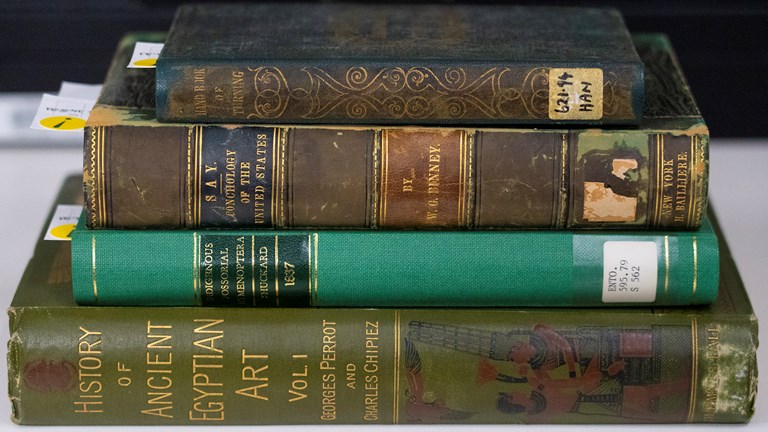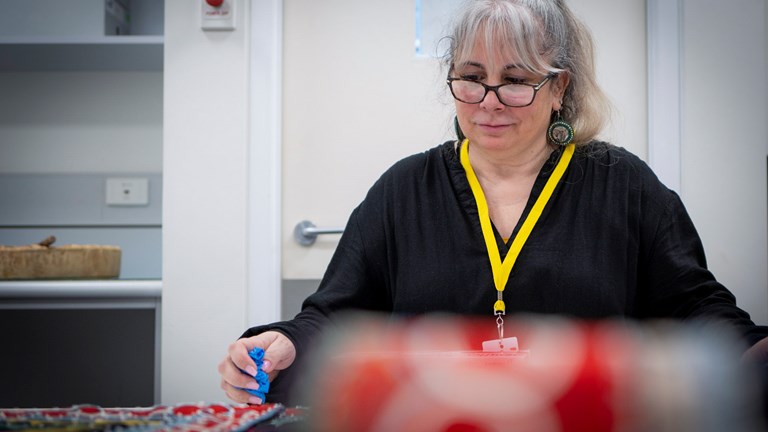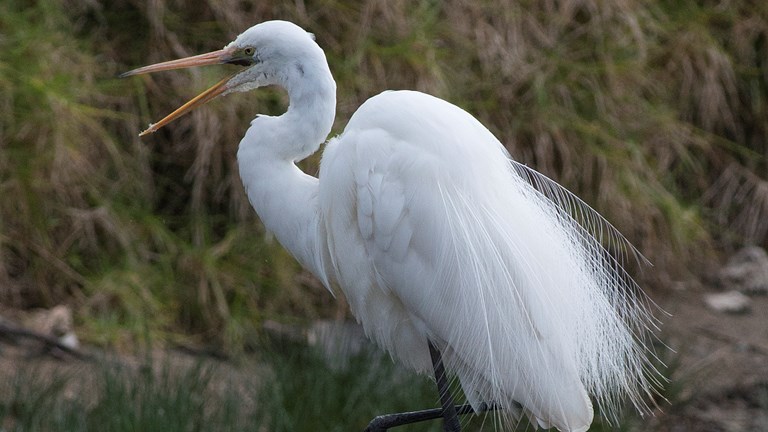A new chapter for Mary Anning’s ‘lost’ book
A rare book, that once belonged to Mary Anning, has returned to its rightful home in Lyme Regis after it was spotted in a Museums Victoria video.
When we made a video about a rare book, that once belonged to famed palaeontologist Mary Anning, the last thing we expected was that it would result in the book being sent back to England.
But that is exactly what happened.
It all started with a missing inscription, that someone had tried to erase from history.
And, given Mary Anning’s significance, made for a tantalising mystery.
‘Mary Anning is known for some of the most important geological discoveries of all time,’ explains Hayley Webster, the manager of Museums Victoria’s library.
‘However, as a woman her contribution to science wasn’t as well acknowledged as it should have been in her lifetime.’
Back in 2021, Hayley wanted to recover this missing text from this more than 200-year-old book, A Natural History of the Crinoidea by John Samuel Miller.
Miller published the work in 1821 and gifted this copy to the fossil hunter, with the inscription: ‘To Miss Mary Anning, with the author’s best wishes.’
Underneath that someone else had written the name Elizabeth Philpot—a fellow fossil collector and friend of Mary’s—and the words ‘Given to her by…’
But the rest had been erased.
Some work under a UV light revealed the full inscription to read: ‘Elizabeth Philpot, Given to her by Mr and Mrs Joseph Anning [Mary’s brother and sister-in-law], 1847.’
But when we published the video in 2022, Hayley received an unexpected response.
‘The Lyme Regis Museum got in touch with us, letting us know that the book was, in fact, missing from their collection,’ she recalls.
The Lyme Regis Museum connection
The Lyme Regis Museum is located in the coastal town, of the same name, made famous by Mary Anning’s discoveries.
‘The museum was built in 1921 actually built on the site of Mary Anning's former house and fossil shop,’ says the museum’s geology curator, Dr Paul Davis.
‘The museum considers itself to be the Mary Anning experts.’
So, the ownership claim came with some weight, and plenty of paperwork to back it up.
‘Initially, I was quite taken aback,’ says Hayley.
‘But having been able to follow through the whole process from that time to now, when we're preparing to hand the book over, it's actually been really interesting and an unexpectedly positive outcome.’
Hayley had previously investigated the provenance of this book, but double checked it all again to see how it tallied with the claim from Lyme Regis.
And since this copy has some unique features, that had been documented by the Lyme Regis Museum, it was clear that this was the missing volume.
‘It's one of the very few books known to be in existence that were actually owned by Mary Anning,’ says Paul.
Books at this time were an expensive luxury—one the working-class could rarely afford.
From the recovered inscription, we know Mary’s brother, Joseph, gave the book to Elizabeth Philpot.
‘And it stayed in the Philpot family until 1929, when a relative donated to the Lyme Regis Museum,’ says Hayley.
‘Sometime between the 1930s and the 1970s, the book went missing from the Lyme Regis Museum.’
How exactly this happened remains a mystery, but during this time the museum suffered a decline.
There was also public access during World War II, when it was used as an air raid shelter.
‘It reappeared on the antiquarian book market in the 1980s,’ says Hayley.
Museums Victoria purchased it in 1985 from the UK bookseller Blackwell’s for £300.
‘We were quite unaware of the link to the Lyme Regis Museum,’ says Hayley.
Mary Anning’s book goes home
‘The book was purchased for scientific research rather than its link to Mary Anning, although we did know about that at the time of the purchase,’ says Hayley.
‘These types of historic books were once really important to museum library collections as references.’
Scientists would need to reference historical books like this to see how animals and plants had been classified.
‘Now it’s less of a factor because there has been so much digitisation,’ says Hayley.
‘We contribute to the Biodiversity Heritage Library, which is a worldwide project to digitise out-of-copyright scientific literature.’
Which means rather than having to access a physical copy of a rare, and fragile, book, scientists these days can get the same information online—including A Natural History of the Crinoidea.
So, from Museums Victoria’s side, this book was no longer serving the research purpose it was originally purchased for.
‘Alongside that there has also been a shift in library practise and the development of rare book collections,’ says Hayley.
Rare books like this used to live on open-access shelves alongside other academic texts.
These days they are now kept in climate-controlled environments behind strict security and are appreciated as historical artefacts.
And, as everything checked out for the ownership claim from the Lyme Regis Museum, it was only right to return it.
‘It feels like tying up loose ends,’ says Hayley.
‘I looked into the history of ownership of this work when we were making the video in 2021 and there was a part that was missing—now we know.’
The book was returned to the Lyme Regis Museum in May 2024.
‘The museum is exceptionally excited to have a very rare book that was once owned by Mary Anning, that was actually lost from our collection over 50 years ago, returned to us,’ says Paul.
It is now on public display—this time in a glass cabinet, alongside other works from Mary Anning’s collection.
And while A Natural History of the Crinoidea will be missed from Museums Victoria’s Rare Book Collection, Hayley is pleased to see it back where it belongs.
‘It feels quite good because I can really see that it will make such a difference to be in that location where Mary Anning has been such an important part of the history,’ she says.












